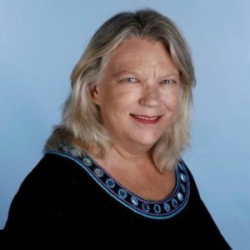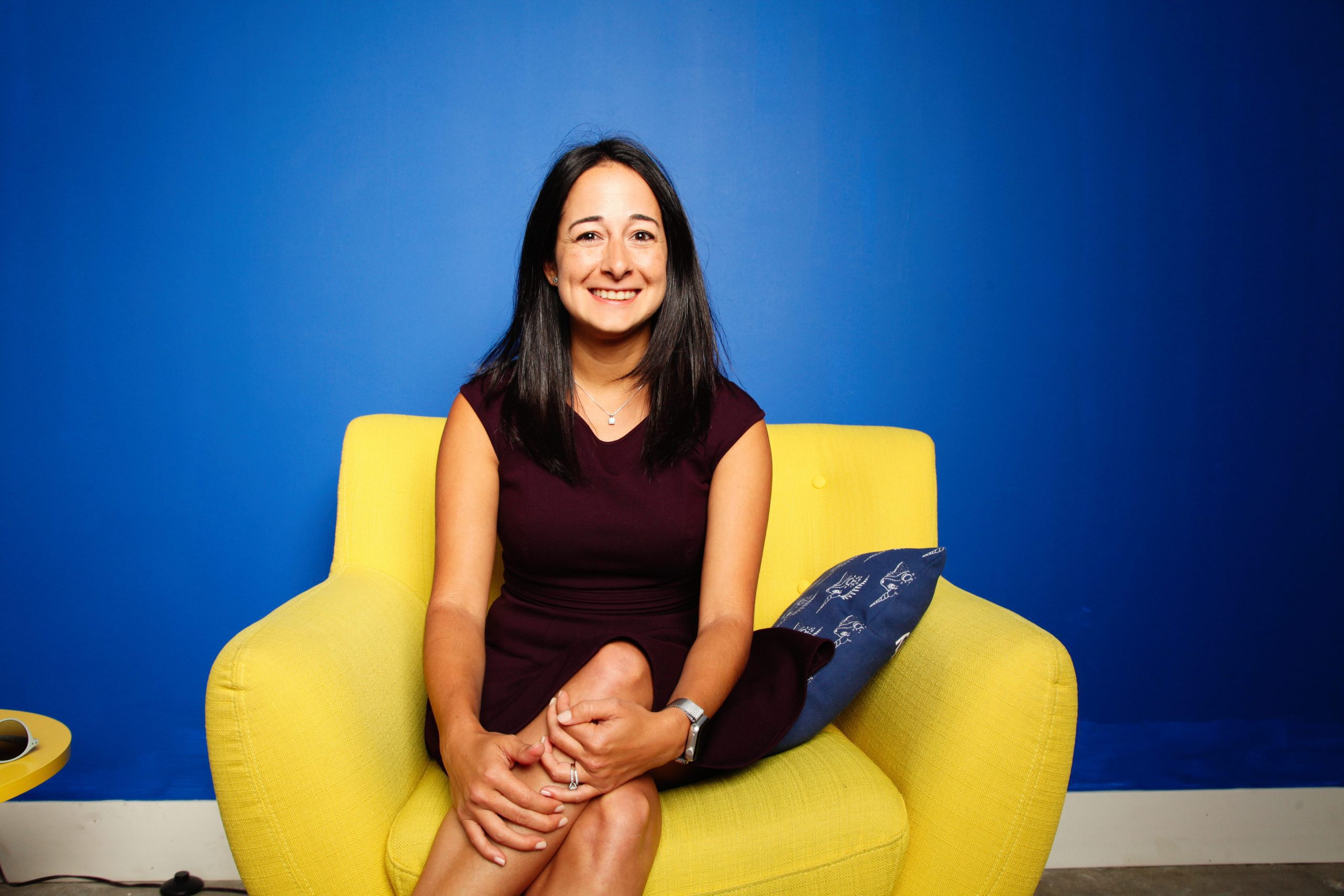By Nancy Dahlberg
Welcome home, Mónica Simó Black.
The Cuban-American born in Miami has been working the past 15 years in Silicon Valley, Seattle and Northeast, most recently as investment director for the philanthropic Chan Zuckerberg Initiative focused primarily on education. Before that, the venture investor worked for Clever, the Bill and Melinda Gates Foundation and JP Morgan.
This past fall, Black joined TheVentureCity as a partner, running TheVentureCity’s venture activity in the Americas. TheVentureCity runs an accelerator and a fund and offers community programs. She moved back to Miami in December.
As Black has been diving into her new role, she has also been learning as much as she can about the Miami ecosystem, meeting with startups and organization leaders. Her days are filled with meetings with portfolio founders, managing in-bounds, screening opportunities, and conducting due diligence on companies in the pipeline including working with the tech team to dig into the company’s data and its product roadmap.
“I’m making sure we are as smart as we can possibly get about the sector the company is in and the company itself before we make an investment,” said Black, she studied economics and management science at MIT and received her MBA and Masters of Education from Stanford.
In an investment, TheVentureCity typically looks for software-driven companies in the seed or Series A stage that can show at least six months of data in either user growth, user engagement or revenue. “That’s an or not an and,” she said.
“Our current portfolio spans retail to travel to enterprise to consumer fin-tech and healthcare,” she said. “But what we look for mostly is how quickly have they been growing … and that the business is nearing an inflection point.”
Pretty standard in the world of venture, she said. “One thing unique to us and our specific investment thesis and the strengths we have around the table is we look for entrepreneurs who early on in their companies’ life cycles are already thinking international.”
So why did she come back? I mean investing for the Chan Zuckerberg philanthropy must have been pretty impactful.
“It was probably one of the most exciting things that I have done in my career. I joined as one of the first 10 members in the organization and saw it grow from 10 of us in a small office above a laundromat to 300 people in real offices spanning multiple buildings in two years,” Black said.
She was lured back by a real desire to impact Latin America, back diverse founders and fill some of the opportunity gaps that exist in emerging tech hubs.
“One of the things I learned at CZI is that talent is equally distributed globally. You can see it on charts of density of developers per capita or the number of Github pushes and how that is distributed geographically — it is all over the world. But if you look at venture funding, it is very concentrated in the Bay Area, New York and a few other places. So there is an opportunity gap.”
Underrepresented minorities and female founders don’t always have the luxury of quitting their day jobs to start something new; they also may not have the friends and family network to get their venture off the ground, she said. In Latin America especially, there is this early-stage gap.
“As a Hispanic woman born of parents who emigrated from Cuba, I am very passionate about catalyzing this ecosystem and unlocking all that potential I know that exists.”
She said TheVentureCity’s founders — Laura Gonzalez-Estefani [read a Q&A with her here] and Clara Bullrich — and the team share the same vision. Finding TheVentureCity plus personal motivations to be close to family again drew her back.
“The beauty of what we are doing here is we are not just coming in with capital, we are really trying to catalyze all aspects of the ecosystem. We built a team of operating partners, we have data scientists, we have an experienced CTO, we have a head of product who worked at eBay and PayPal and Vodafone. We have a head of growth who helped scale WhatsApp and Facebook and Instagram.”
Coming from the Valley, Black sees ways Miami’s ecosystem could be less siloed.
There, the universities are very plugged into the ecosystem; it is a very big part of their culture. “The number of companies spun out of Stanford is insane. I think that could happen at any university but Stanford is really invested in making that so,” she said.
And the culture of innovation goes back more than half a century. Companies have always been very open to having people leave and start their own thing. “We have a ton of talent in Miami working in big companies. It would be awesome to see some of that talent break away and start something new,” Black said.
Miami, too, can start with a clean slate. The Bay Area is trying to break away from its long established pattern-recognition baggage but it’s a long slog: If you are a young male founder from Standard, chances are you will be funded, said Black.
“One of the things I love about Miami is nobody asks where you went to college. They are looking more at who are you, what is your business plan, who is your team and how are you going grow this,” said Black, who went to Mast Academy.
Talent in the Valley and NYC is insanely expensive and difficult to retain. “People are starting to realize there is talent everywhere and you don’t need to be in the Bay Area to find talented developers, marketers, growth people.” Examples of amazing companies growing outside the Valley are Miami’s Nearpod and Genius Plaza, she said.
Latin America represents an exciting opportunity because tech companies there have been leapfrogging the tech infrastructure the US is slogging though, whether it leapfrogging straight to wireless or in fintech services. Across LatAm, at least 70 percent of population doesn’t have a bank account and may never need one. They will still have access to credit and banking-like services but not with all the inefficiencies that come with the banking infrastructure, Black said.
In Latin America, she also has been seeing mobility innovation, something Miami could use. Uber just announced in Mexico it will start testing Uber Vans, a blend of Uber Pool and a public transport bus. Another startup, Urbvan, is doing a similar thing, providing a safer, cleaner and more reliable service than a bus. “And it is better for the environment than a million Ubers driving people around,” she said.
In Miami, she says, talented entrepreneurs are hustling hard but are flying under the radar.
“There is a lot of momentum from the city and the key players in the ecosystem to really unlock Miami as a hub for Latin America. I think we will also see our homegrown talent start to break out. Conferences like eMerge Americas are doing a great job shining a spotlight on this local and international ecosystem we have here.”
Still, when you look at the total capital going to venture in Miami, it is relatively small. Demand exceeds supply: “We need more whether it is based here or willing to invest here.”
Over the past 18 months, TheVentureCity’s fund has made 12 investments in the Americas: 2 in Colombia, 3 in brazil, and 7 in the U.S, including the Miami area’s The Fastmind [story here], Boatsetter and Finconecta. It’s one of several funds now operating in Miami, including 500 Startups Miami’s LatAm office and accelerator program in Miami.
Follow Nancy Dahlberg on Twitter @ndahlberg and email her at [email protected].
- Tech and politics do mix at 2024 Miami Tech Summit, with eye on the future - April 18, 2024
- #MiamiTech Everything: Seen and heard in April - April 17, 2024
- 8+ things to know in #MiamiTech: Dapta and Siprocal raise funding, plus news from Jeff Bezos, MoonPay, Sustainable Skylines, Freebee & more - April 11, 2024





